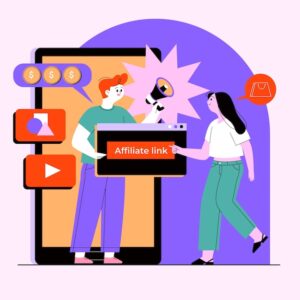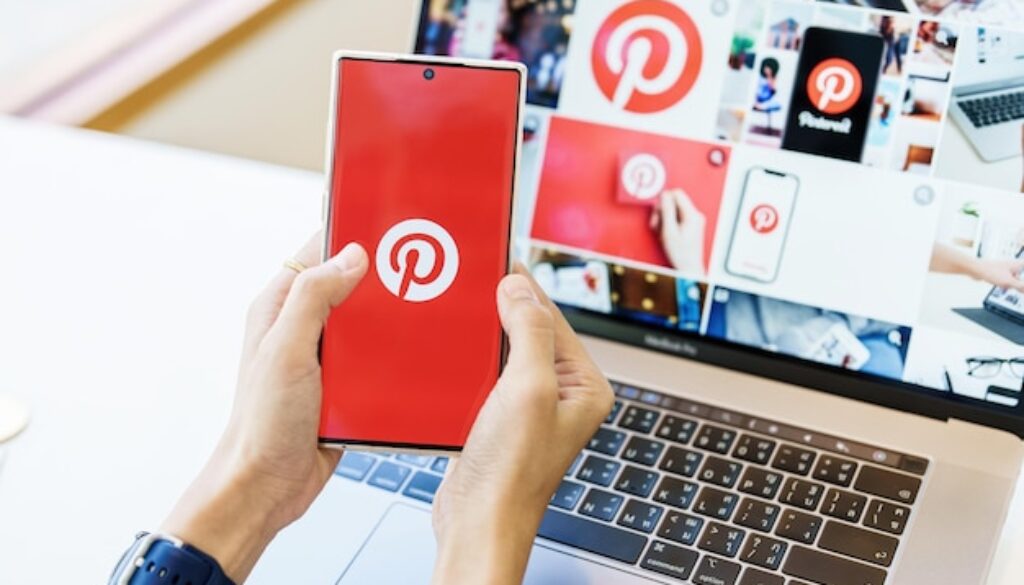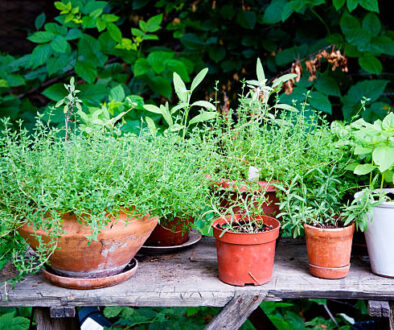How to Promote Affiliate Links on Pinterest
Thinking about making extra cash, but don’t want to start a blog or show your face on YouTube? I get it. That’s exactly why I’m such a fan of Pinterest Affiliate Marketing.
You don’t need a huge following, a camera, or even a website to start making money from Pinterest.
All you need is a free Pinterest account and a smart way to share your links.
If you’re an affiliate marketer (or thinking about becoming one), Pinterest is hands-down one of the easiest platforms to get started on right now.
It works like a visual search engine, which means people come here looking for ideas, and they’re ready to click, buy, and save. Sounds like a win-win, right?
I’ve been using Pinterest to grow my passive income streams for a while now, and honestly, it still surprises me how powerful it actually is.
You create a pin once, and it keeps working for you for weeks or even months later.
That’s the kind of work smarter, not harder vibe I think we all want.
In this guide, I’ll walk you through exactly how to promote your affiliate links on Pinterest the right way.
I’ll show you what works, what to avoid, and how to actually get clicks that convert into extra cash.
Quick Note: I made $3,647 in a month with Pinterest by using this one simple strategy — and you don’t need a blog or experience to do it. Download the Free Guide Here!
So let’s break it down step-by-step, keep it simple, and get you making money from Pinterest, even if you’re just starting out. Sounds good? Let’s start then.
Why Pinterest Is a Goldmine for Affiliate Marketers

Most people think of Pinterest as a place for recipes, wedding inspo, or home decor ideas.
But here’s the thing, Pinterest users aren’t just looking for things.
They’re planning, researching, and buying. That’s exactly why it works so well for Pinterest Affiliate Marketing.
People come to the platform already in a mindset to take action.
▶▸ Get my easy-to-follow ebook on how to succeed fast with affiliate marketing here!
They’re not just scrolling aimlessly like on other platforms. They’re searching for the best air fryer, a quick side hustle idea, or new skincare routines, and your affiliate link can be the answer they’re looking for.
Unlike social platforms that favor creators with massive followings, Pinterest levels the playing field.
You don’t need to be internet-famous to get your pins seen.
You just need to understand how to create useful, clickable content that matches what people are already searching for.
And once you learn how to do that right? That’s when you start to earn more money without constantly pushing or selling.
What You Need Before You Start Posting Affiliate Links
Let’s set the foundation first. You can’t just grab an affiliate link and slap it on a pin.
Wrong. Pinterest has rules, nd if you don’t follow them, you risk getting your account flagged or shut down. So here’s what you need to have in place:
- A Pinterest Business Account – It’s free and takes five minutes to set up. You’ll need it to access analytics and run ads if you ever want to later.
- Affiliate Programs You’re Part Of – You can use direct affiliate links or send users to a blog post or landing page that includes your links. Just make sure you’re following the affiliate program’s terms of service.
- Disclosure – You have to disclose that your PIN includes an affiliate link. A simple “affiliate link” in the pin description is enough, but don’t skip this step. It keeps you compliant with FTC guidelines.
Once you’ve got those pieces in place, you’re ready to go.
Choosing the Right Niches That Make Money
Not every product works well on Pinterest. This platform is very visual and heavily focused on lifestyle.
Quick Note: I made $3,647 in a month with Pinterest by using this one simple strategy — and you don’t need a blog or experience to do it. Download the Free Guide Here!
So if you’re an affiliate marketer, pick categories that naturally fit into Pinterest’s vibe. Some of the best-performing niches include:
- Home decor
- DIY and crafts
- Beauty and skincare
- Fitness and wellness
- Budgeting and finance
- Fashion and outfit ideas
- Recipes and meal prep
- Side hustles and making extra cash
These are topics people already search for on Pinterest, so you’re not trying to force-fit a product where it doesn’t belong.
You’re matching products to real searches, and that’s what gets clicks.
How to Find Affiliate Products That Work Well on Pinterest
Here’s something I’ve learned: Not every product with a good commission is worth promoting.
If you haven’t already 👉 Get my easy-to-follow ebook on how to succeed fast with affiliate marketing here!
If it’s not visually appealing or doesn’t solve a clear problem, it probably won’t perform well on Pinterest. So before you grab any random link, ask yourself:
- Does the product have a strong visual element (like a product image or demo)?
- Can it be positioned as a solution to a common Pinterest-friendly problem?
- Does it have a clear benefit that someone would care about?
You can find affiliate products on sites like Amazon Associates, ShareASale, Rakuten, or even direct-to-brand programs.
When you’re starting out, I suggest picking just a few products to focus on.
Learn what your audience responds to, then go from there.
How to Create Click-Worthy Pins for Affiliate Links
Okay, this is the big one. If your pin doesn’t stop the scroll, no one clicks on it.
And if no one clicks it? You don’t really start making money. So here’s how to build pins that grab attention:
1. Use Bright, High-Quality Images
Pinterest is all about visuals. Your pin needs to be clean, vertical (1000×1500 px works great), and easy to see on mobile. Avoid clutter and tiny text that’s hard to read.
2. Create Clear, Bold Text Overlays
Tell the person exactly what they’re getting. For example:
- “The $25 Skincare Set That Cleared My Acne”
- “How I Made $200 in 3 Days with This Side Hustle”
- “Best Travel Bag for Moms (Under $50!)”
Be specific. Get to the point. And make it obvious why someone should care.
3. Add a Call to Action
Don’t leave it vague. Encourage people to click with a simple CTA like:
- “See It Now”
- “Shop Here”
- “Get the Full Guide”
That little nudge makes a difference.
4. Use Pinterest Keywords
This is your SEO game. Pinterest is a search engine, so treat it like that.
Include keywords in your pin title, pin description, and even your image filename before uploading.
Think like the user, what would you search for if you were looking for that product?
Best Places to Link Your Pins
You’ve got two main options when you’re doing Pinterest Affiliate Marketing:
Option 1: Direct Affiliate Links
This is the quickest method. You link your pin straight to the affiliate product page. It’s fast, easy, and works great for things like Amazon products. Just make sure:
- The affiliate program allows direct linking from Pinterest
- You clearly disclose that it’s an affiliate link
This method works well for product roundups or “top finds under $50”-style content.
Option 2: Blog Post or Landing Page
If you have a blog or simple site, you can send users to a post that talks about the product in more depth.
Quick Note: I made $3,647 in a month with Pinterest by using this one simple strategy — and you don’t need a blog or experience to do it. Download the Free Guide Here!
This method builds more trust and often leads to higher conversions.
Here’s how it works:
- Pin links to your blog post
- Blog post includes affiliate links and helpful info
- User reads, clicks, and buys
It takes a little more work, but it’s worth it long-term, especially for building a passive income stream.
The Do’s and Don’ts of Promoting Affiliate Links on Pinterest
Let’s save you from trial and error with a few rules I live by:
DO:
- Add fresh pins regularly (Pinterest loves new content)
- Use keywords naturally in your pin title and description
- Test different pin styles and headlines to see what works best
- Keep your brand or niche consistent so your audience knows what to expect
- Track what gets clicks and what doesn’t using Pinterest Analytics
DON’T:
- Spam your boards with the same link over and over
- Skip the affiliate disclosure (seriously, don’t do this)
- Use clickbait headlines that don’t deliver (people will bounce)
- Ignore mobile optimization; most Pinterest users are on their phones
- Give up after one pin doesn’t perform; Pinterest takes time to gain traction
How Many Pins Should You Post?
You don’t need to post 100 pins a day. Instead, focus on quality over quantity.
I started with just 3–5 pins per day, all pointing to different links or blog posts.
Then, over time, Pinterest picked up on what was working and gave those pins more reach.
It’s a snowball effect. If you can stick with posting consistently for even 30 days, you’ll start seeing momentum.
How to Track Your Success (and What to Watch For)
This is where that Pinterest Business account comes in handy. You’ll get access to analytics like:
- Impressions (how many people saw your pin)
- Saves (how many pinned it to their own boards)
- Clicks (how many actually clicked your link)
You can also track conversions through your affiliate dashboard. Watch for trends.
Are certain styles or topics getting more clicks? Double down on those.
That’s simply how you go from random posting to a real marketing guide strategy.
Can You Really Make Money From Pinterest?
Short answer: Yes. But it’s not instant or overnight. You won’t hit $1,000 in your first week (though hey, I won’t stop you).
But with consistency and smart pinning, you absolutely can build passive income over time.
I’ve had pins from over a year ago that still bring in clicks. Some days, I’ll get commissions from products I forgot I even promoted.
That’s the beauty of Pinterest, it keeps working even when you’re not.
And the more you post, the more chances you have to earn. So yeah, if you’re looking to earn more money without trading your hours for dollars, this is one of the most beginner-friendly ways to start.
Conclusion
Here’s the truth: you don’t need to be a tech genius or full-time influencer to succeed at Pinterest Affiliate Marketing.
You just need to be helpful, consistent, and a little patient.
Start with one or two affiliate programs. Create clean, valuable pins. Pay attention to what works. And stick with it.
You’re not just sharing links, but you’re solving problems, offering ideas, and helping people find what they’re already looking for. And in return?
You get a chance to start making money from it.
Now It’s Your Turn
You’ve got the strategy. You’ve got the tools. Now it’s time to put it into action.
Start with one pin today. Keep it simple. Keep it clear. And remember, it doesn’t need to be perfect to get results.
Once your pins are out there, they’ll keep working for you. That’s the power of Pinterest Affiliate Marketing.
You’re not just building clicks, but you’re building a long-term stream of extra cash.
Go get it.

